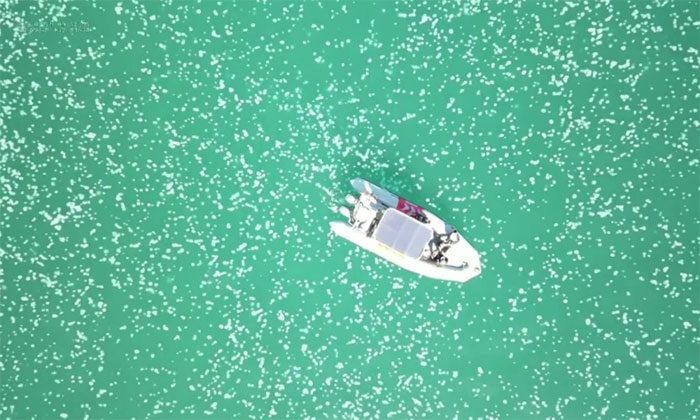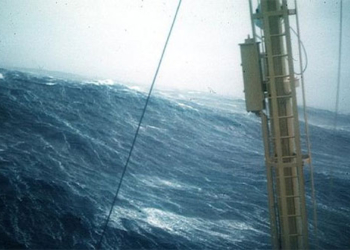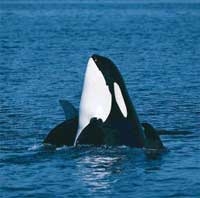Environmental pollution and climate change are creating conditions for many jellyfish species to invade the Mediterranean coast.
A swarm of white jellyfish in the waters off Haifa, Israel. (Video: Reuters)
A multitude of jellyfish have covered the waters off the city of Haifa in northern Israel, creating a spotted white appearance on the surface when viewed from above, as shared by the Israel Nature and Parks Authority (INPA) on July 19.
The phenomenon of jellyfish migrating to the Mediterranean coast of Israel occurs every summer, typically starting in July, but this year has seen an unusually high number.
INPA attributes this to climate change as well as human activities such as the Suez Canal excavation, littering, and wastewater discharge into the sea. These factors harm jellyfish predators like turtles and sunfish, allowing jellyfish to reproduce uncontrollably.
“The water is getting warmer, and we are seeing more and more jellyfish. Global warming is certainly contributing to these massive swarms,” said marine police officer Guy Lavian from INPA to Reuters.

Approximately 17 jellyfish species migrate to Israel.
Jellyfish thrive in higher temperatures, and their explosion in numbers directly competes for food and habitat with other marine animals.
According to the Israel Ecological and Environmental Science Association, there are about 17 jellyfish species migrating to Israel, most of which are invasive species originating from the Indian Ocean. They swim from the Red Sea to the eastern Mediterranean through the Suez Canal.
The organization further stated that the leakage of agricultural fertilizers into the sea also contributes to the increase in jellyfish populations by providing nutrients.
Not only do jellyfish threaten native species, but they also disrupt Israel’s energy supply as many are sucked into the country’s power plants. They also cause considerable inconvenience for seafarers, although most are not venomous.




















































